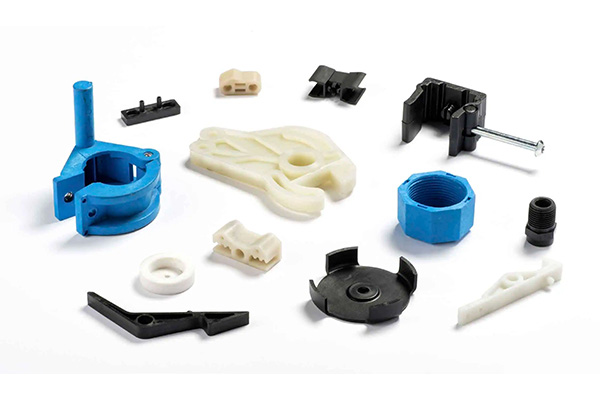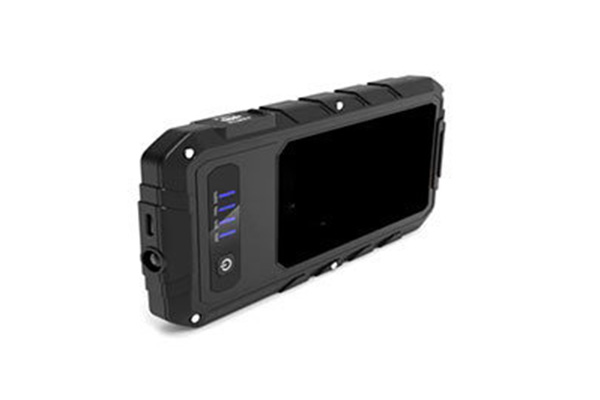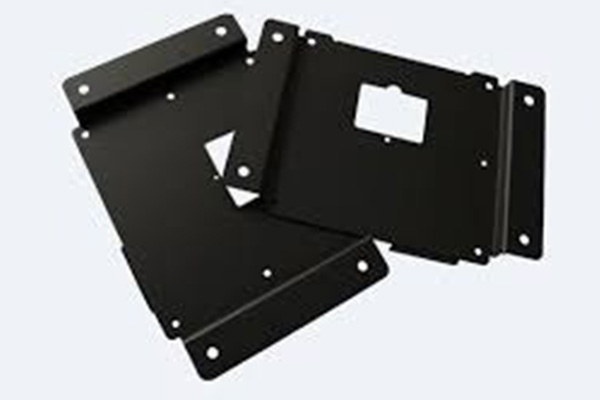Introducción
Manufacturing electronics components with CNC machining is a crucial part of creating precise, high-quality parts for various industries. CNC machining provides the precision needed to create intricate designs in materials used in electronics, such as connectors, circuit boards, and casings. This article will explore how CNC machining plays a pivotal role in electronics manufacturing, its advantages, and the materials commonly used. We’ll also address the challenges that come with this process and how to ensure the highest quality and precision when manufacturing these components.

1. What are Electronics Components in CNC Machining?
Electronics components in CNC machining refer to the small but essential parts used in devices ranging from computers to medical equipment. These components include circuit boards, heat sinks, connectors, pins, and other items vital to ensuring the functionality of electronic devices. The importance of electronics components extends beyond mere functionality; these components impact the performance, reliability, and longevity of electronic products. But here’s the kicker: the manufacturing of these parts requires high precision, and that’s where CNC machining shines.
In many industries, including automotive, medical, and consumer electronics, the role of CNC machining is paramount. Using CNC machines allows manufacturers to achieve the exact specifications required for each component, ensuring that all parts fit together perfectly and function as expected. The ability of CNC machining to handle complex geometries and tight tolerances makes it the ideal method for creating electronic components, reducing waste and increasing efficiency.
2. How Does CNC Machining Work for Electronics Components?
CNC machining works by using computer-controlled machines to precisely cut and shape raw materials into the desired shapes and sizes. The basic principles involve a process where a digital model, often in the form of a CAD file, is used to direct automated tools that mill, turn, or drill the material to the desired design. Ready for the good part? These machines can produce intricate and detailed shapes that would be almost impossible to achieve manually.
There are several key processes involved in CNC machining for electronics components. Milling is one of the most commonly used processes, where rotating cutters remove material to shape the part. Turning is another common process, typically used to create cylindrical components. Drilling and tapping are also essential for creating holes and threads for electronics components like connectors. The precision and automation of these processes allow manufacturers to create components like circuit boards, pins, and casings with incredible accuracy, all while maintaining cost-effectiveness and efficiency.
3. Why is CNC Machining Ideal for Electronics Components?
CNC machining offers a variety of advantages, making it the go-to method for manufacturing electronics components. One of the most significant benefits is precision. CNC machines can produce parts with micron-level accuracy, which is essential for electronics components that require tight tolerances. The ability to create detailed designs without sacrificing quality is a game-changer for industries like aerospace, automotive, and electronics.
What’s the real story? CNC machining is also cost-effective in the long run. While the initial setup costs may be higher, the precision and efficiency of CNC machines lead to lower waste, faster production, and reduced labor costs. This results in significant savings for manufacturers over time. CNC machining is also incredibly versatile, handling a wide variety of materials, from metals like aluminum and copper to plastics and ceramics, making it suitable for creating a broad range of electronics components.
4. What Types of Electronics Components Are Manufactured Using CNC Machining?
CNC machining is used to manufacture various electronics components, each playing a crucial role in electronic devices. For example, circuit boards are often machined using CNC processes to create precise pathways for electrical connections. Heat sinks, which help manage the heat generated by electronic devices, are also commonly made using CNC machining. What’s the kicker? CNC machining ensures that these components fit seamlessly within the designs of the devices they power, contributing to both functionality and reliability.
Connectors and pins, which allow electronic devices to communicate with each other, are another common application of CNC machining. These components must be manufactured with exact precision to ensure they work correctly. CNC machining is also used for creating casings for electronics, which not only protect internal components but also contribute to the device’s overall appearance and durability.
5. What Materials Are Used to Make Electronics Components in CNC Machining?
The materials used in CNC machining for electronics components vary depending on the application and the specific requirements of the part. Metals like aluminum and copper are commonly used because of their strength, conductivity, and ability to withstand heat. Aluminum, for example, is often used for making heat sinks because of its excellent thermal properties. What’s the real story? Copper, known for its superior electrical conductivity, is frequently used in circuit boards and connectors.
Plastics such as polycarbonate and ABS are also used in CNC machining for electronics components. These materials are favored for their ease of machining, lightweight properties, and ability to provide insulation. Polycarbonate is often used for creating casings, while ABS is used for connectors and other components that require a durable yet flexible material. In some cases, ceramics and other advanced materials may be used for specialized electronics components that require additional properties, such as high temperature resistance or chemical stability.

6. How is the CNC Machining Process for Electronics Components Different from Other Manufacturing Methods?
CNC machining offers distinct advantages over other manufacturing methods such as injection molding and 3D printing. What’s the real story? Unlike injection molding, which requires molds that can be costly and time-consuming to produce, CNC machining allows for quicker and more flexible production of parts. It also provides a higher degree of precision, which is critical for manufacturing intricate electronics components. CNC machining can create parts with tighter tolerances than many other methods, ensuring that components fit together perfectly in electronic devices.
When compared to 3D printing, CNC machining also offers a higher level of material selection and can work with metals, plastics, and ceramics. 3D printing, on the other hand, is generally limited to certain materials and has restrictions on the level of detail that can be achieved. Additionally, CNC machining provides better surface finishes, which is vital for components like casings or connectors that must meet both functional and aesthetic requirements. CNC machining stands out as the ideal solution for producing high-precision components in the electronics industry.
7. What Are the Key Challenges in CNC Machining for Electronics Components?
CNC machining for electronics components comes with its own set of challenges. One of the most significant challenges is the need for extremely tight tolerances. Electronics components, such as circuit boards and connectors, often require micron-level precision to ensure proper functionality. But here’s the kicker: achieving these levels of accuracy can be difficult and requires high-quality CNC machines and skilled operators.
Material considerations also pose challenges, as different materials behave differently during machining. For example, metals like aluminum and copper can be tricky to machine without causing deformation or damaging the surface finish. Maintaining consistency and quality across a large volume of parts is another challenge. CNC machining allows for high precision, but ensuring that every part produced meets the same standards can be difficult, especially when scaling up for mass production.
8. How Can You Ensure High Precision in CNC Machining for Electronics Components?
Achieving high precision in CNC machining for electronics components requires several key steps. First and foremost, using high-quality CNC machines equipped with the latest technology ensures that parts are produced with the required accuracy. CNC machines with advanced controls and sensors can detect and correct minor deviations during the machining process, ensuring that the parts meet the required tolerances.
Another important factor is proper tool selection and maintenance. The right cutting tools ensure smooth operation, reduce wear, and extend the life of the machine. Regular maintenance, including calibration and tool replacement, is crucial to maintaining precision over time. Advanced CAD/CAM software plays a vital role in ensuring that designs are accurately translated into machine instructions, further enhancing the overall precision of the process.
9. What Are the Common Techniques in CNC Machining for Electronics Components?
Several techniques are commonly used in CNC machining for electronics components, each suited to different types of parts and materials. Milling is one of the most commonly used processes, allowing for detailed cuts and shapes to be made in a wide range of materials. Milling machines are capable of handling both simple and complex designs, making them ideal for creating components such as connectors, casings, and circuit boards.
Turning is another common technique used in CNC machining for cylindrical components. It’s especially useful for manufacturing components like pins and shafts, which are found in many electronics devices. Drilling and tapping are also essential for creating holes and threads, which are necessary for components like connectors and fasteners. By using these techniques, CNC machining can produce a wide range of electronics components with high precision and efficiency.

10. How Do You Choose the Right CNC Machining Supplier for Electronics Components?
Elegir lo correcto CNC machining supplier for electronics components is a critical decision that can impact the success of your project. Evaluating a supplier’s experience in electronics machining is a good starting point. Suppliers with a proven track record in manufacturing electronics components will have the knowledge and skills required to meet the unique challenges of this industry.
Certifications and quality control standards are also essential factors to consider. Suppliers that are ISO-certified, for example, demonstrate their commitment to maintaining high-quality standards and producing parts that meet rigorous specifications. When comparing suppliers, it’s important to evaluate their lead times, cost structures, and the range of services they offer to ensure that they can meet your project’s needs and deadlines.
11. What Are the Costs Involved in CNC Machining Electronics Components?
The costs involved in CNC machining for electronics components can vary significantly depending on several factors. Material costs are one of the most significant expenses, as high-quality metals, plastics, and ceramics can be costly. Machine time is another key cost driver. The more complex the part and the tighter the tolerances, the more machine time is required, which increases costs.
Labor and design costs also play a role. Skilled machinists and designers are essential for ensuring that the parts are produced to the required specifications. Additionally, factors such as part volume and order size can influence the overall pricing. Larger production runs generally result in lower per-part costs due to economies of scale, while smaller runs can be more expensive due to higher setup and labor costs.
12. How Do CNC Machining Services Ensure Quality Control for Electronics Components?
CNC machining services rely on a variety of quality control measures to ensure that electronics components meet the required standards. Inspection and testing are essential parts of the process, with many CNC shops using advanced measuring tools and techniques to verify that parts are within tolerance. These tools can include coordinate measuring machines (CMM), optical scanners, and laser gauges, all of which provide highly accurate measurements.
Quality certifications, such as ISO 9001, are also a sign that a CNC machining service is committed to maintaining high standards. Automated systems are often employed to monitor and control the machining process, ensuring that parts are consistently produced to the highest quality. These systems help to detect any deviations or issues early in the production process, reducing the likelihood of defects and ensuring that the final products meet the desired specifications.
13. How Do You Scale CNC Machining for Mass Production of Electronics Components?
Scaling CNC machining for mass production of electronics components involves addressing several key challenges. One of the primary hurdles is managing high-volume production while maintaining the precision and quality required for electronics components. Automation plays a significant role in overcoming this challenge. By automating certain aspects of the machining process, such as loading materials and performing secondary operations, manufacturers can improve efficiency and reduce labor costs.
Workflow optimizations are also essential for scaling production. This can include adjusting machine schedules, reducing setup times, and streamlining the overall production process. Managing lead times and order fulfillment is another critical aspect of scaling CNC machining. By working closely with suppliers and optimizing production schedules, manufacturers can ensure that large orders are fulfilled on time and without compromising quality.
14. What Are the Future Trends in CNC Machining for Electronics Components?
The future of CNC machining for electronics components is bright, with several exciting trends emerging in the industry. Innovations in materials and machining techniques are making it possible to create even more complex and advanced components. For example, the development of new composite materials and coatings is allowing for the production of components that are both lighter and stronger than ever before.
The integration of AI and machine learning into CNC machining is another trend that is set to revolutionize the industry. These technologies can help improve the precision and efficiency of machining processes by predicting tool wear, optimizing machining parameters, and even making real-time adjustments during production. Additionally, the rise of Industry 4.0 and smart manufacturing is bringing new levels of automation, connectivity, and data analysis to CNC machining, allowing for even greater precision and efficiency.
15. What Are the Best Practices for Maintaining CNC Machines for Electronics Components?
Routine maintenance is essential for ensuring that CNC machines continue to operate at peak performance. Regular tasks include checking and replacing worn-out tools, lubricating moving parts, and cleaning the machines to prevent debris from affecting performance. By maintaining machines properly, manufacturers can extend the life of their equipment and avoid costly repairs.
Preventing wear and tear on tools and equipment is another key aspect of machine maintenance. Using the right tools for the job, replacing tools when they begin to wear down, and monitoring tool life can prevent excessive damage and ensure that components are produced with the highest accuracy. Machine calibration is also crucial, as it ensures that the CNC machine is operating within the required tolerances and specifications.

Sección de preguntas frecuentes
Pregunta 1: What is CNC machining?
CNC machining is a process that uses computer-controlled machines to shape materials into precise parts. It’s commonly used for manufacturing a wide range of components, including electronics parts.
Pregunta 2: ¿Cómo funciona el mecanizado CNC?
CNC machining works by using digital files (like CAD designs) to guide automated machines that cut, mill, drill, or turn raw materials into finished products with high precision.
Pregunta 3: What types of electronics components can be made with CNC machining?
Common electronics components made using CNC machining include circuit boards, connectors, heat sinks, and casings.
Pregunta 4: Why is CNC machining preferred for electronics components?
CNC machining offers precision, flexibility, and cost-effectiveness, making it ideal for creating high-quality electronics components with intricate designs and tight tolerances.
Pregunta 5: How do I ensure quality in CNC machining for electronics components?
Ensuring quality involves selecting high-quality CNC machines, using accurate CAD/CAM designs, performing regular machine maintenance, and conducting thorough quality control and testing.

